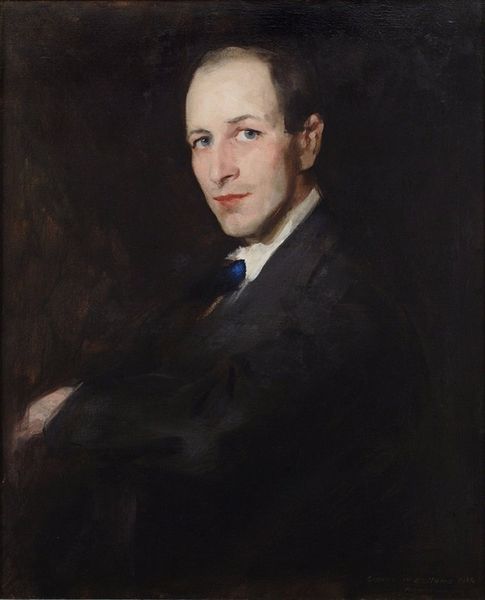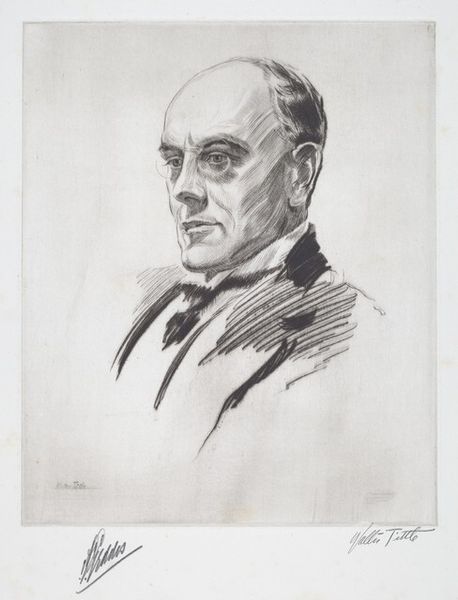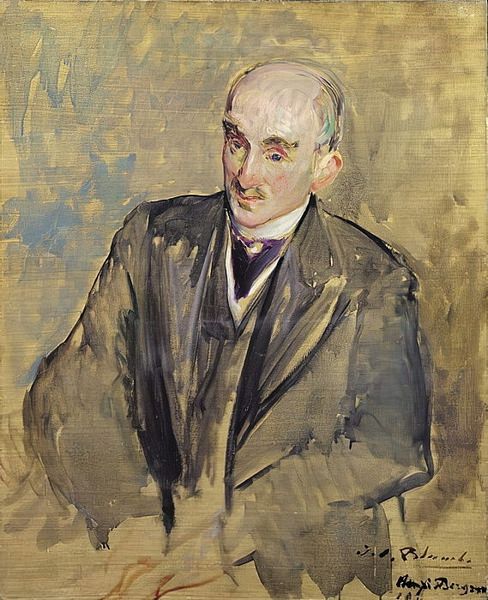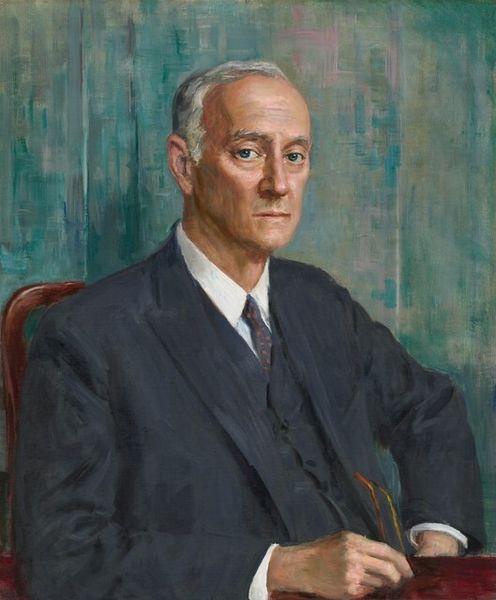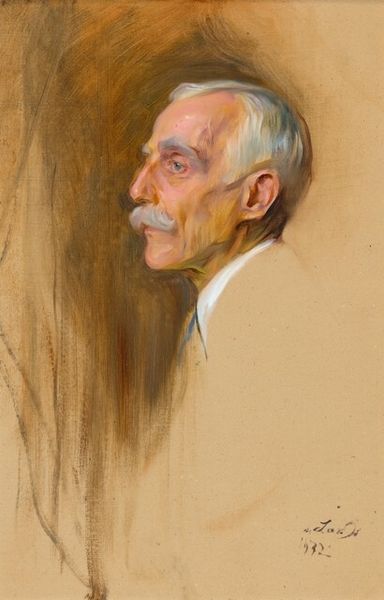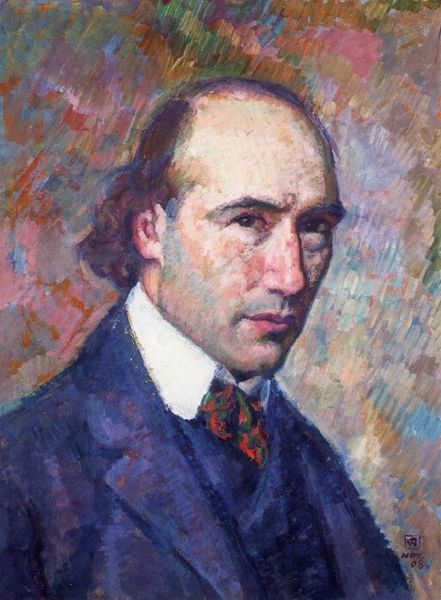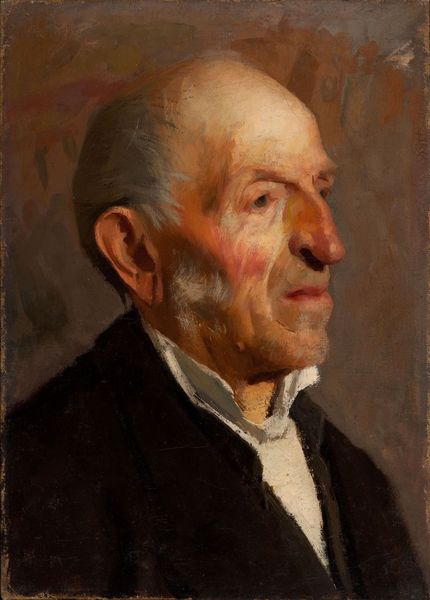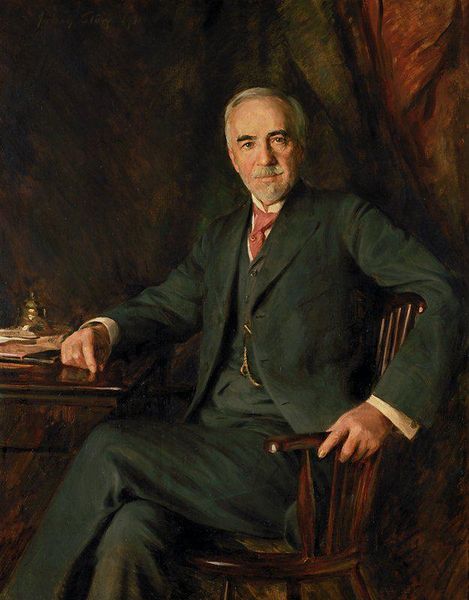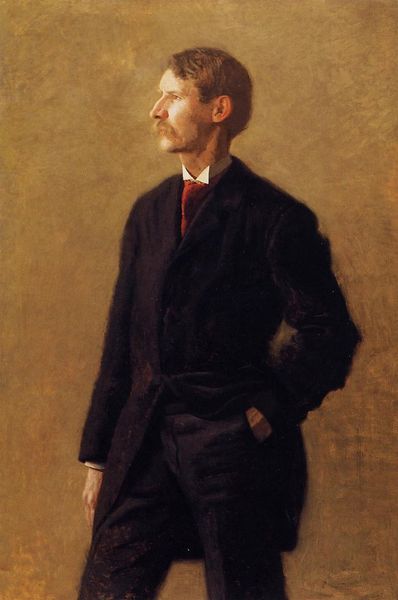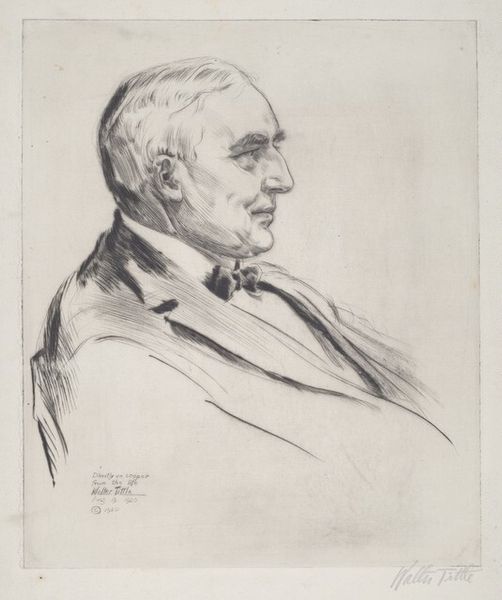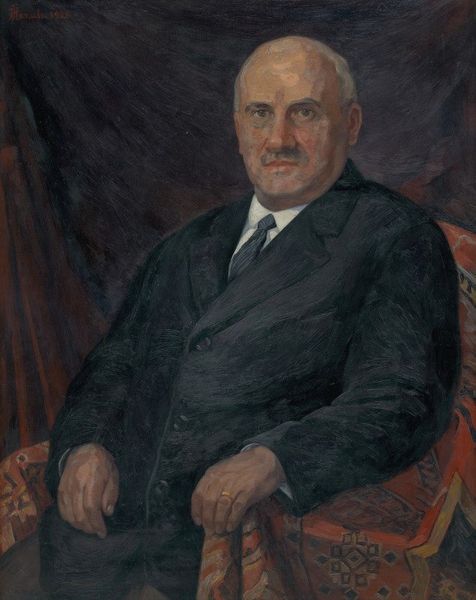
oil-paint
#
portrait
#
figurative
#
oil-paint
#
oil painting
#
portrait reference
#
portrait head and shoulder
#
intimism
#
animal drawing portrait
#
portrait drawing
#
facial study
#
facial portrait
#
portrait art
#
modernism
#
fine art portrait
#
realism
#
digital portrait
Copyright: Public Domain: Artvee
Editor: Here we have "Study portrait of Baron Georg Franckenstein," by Philip Alexius de László. The texture of the oil paint is quite visible, giving the portrait an unfinished, intimate quality. What can you tell us about this work? Curator: This piece strikes me as an interesting example of how portraiture intersects with labor and social class. Look at the loose brushstrokes, almost as if the artist is deliberately exposing the means of production. This wasn't about replicating reality, it's about demonstrating the *act* of painting. Editor: So, you see the exposed brushwork as intentional? Curator: Absolutely. Consider the baron himself. What was his labor? His consumption? De László, a sought-after portraitist, created a commodity to be consumed, showcasing the baron’s status. This piece exposes the exchange and power dynamics at play. It wasn't merely about depicting the man, but creating a valuable object. Editor: That's fascinating! I hadn't considered the portrait itself as a form of labor and a commentary on class. Does the unfinished quality perhaps democratize the artwork by making it more transparent? Curator: That’s a good point. The transparency perhaps subverts the idealized portrayal usually associated with such commissions, bringing into focus both the skill and material involved in crafting social status. Editor: This has completely changed my view of the portrait. Seeing it as a product of labor and social dynamics adds so much depth. Curator: Indeed. It reminds us that art isn't just about aesthetics, it's deeply intertwined with the economic and social structures of its time.
Comments
No comments
Be the first to comment and join the conversation on the ultimate creative platform.
